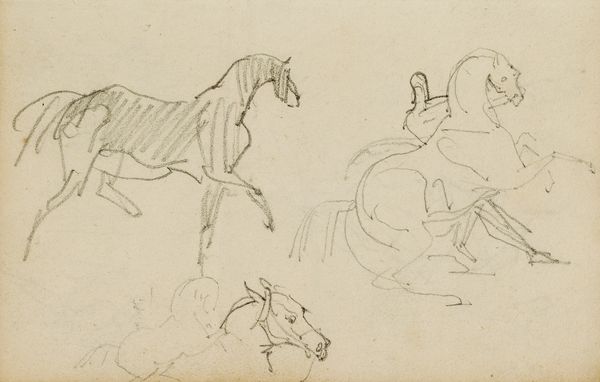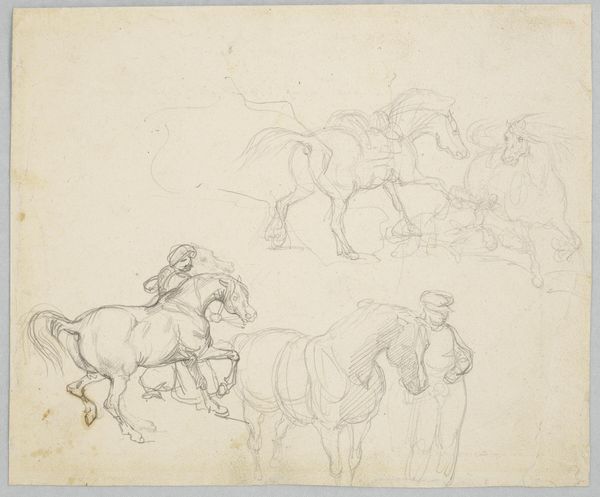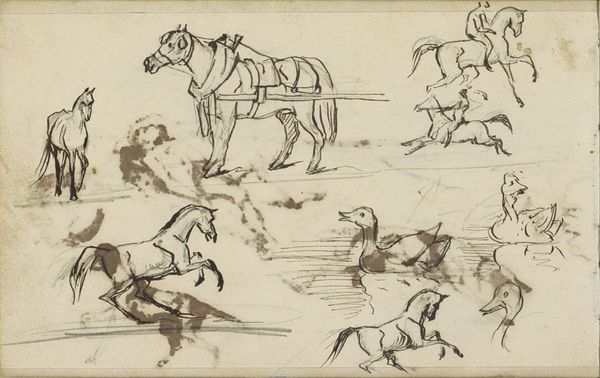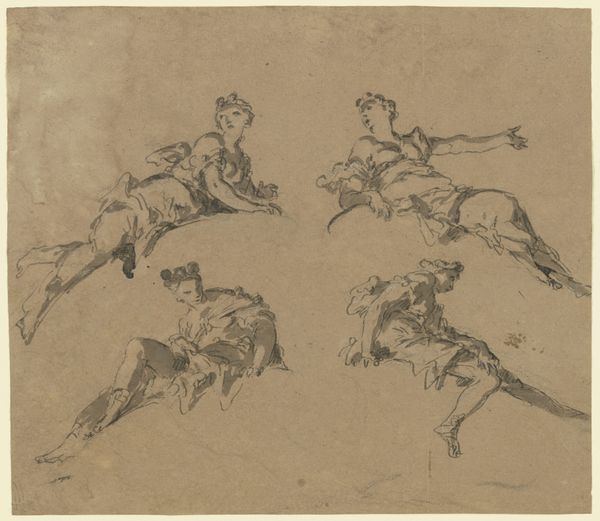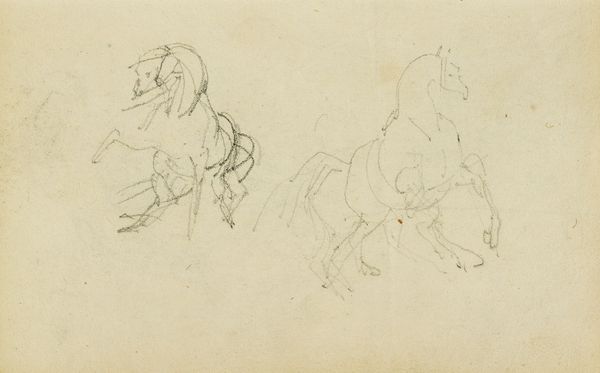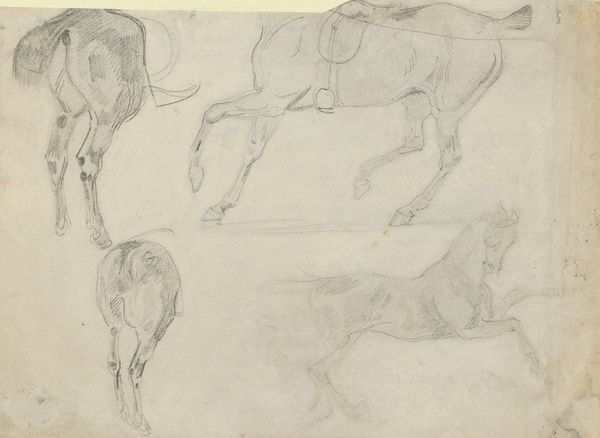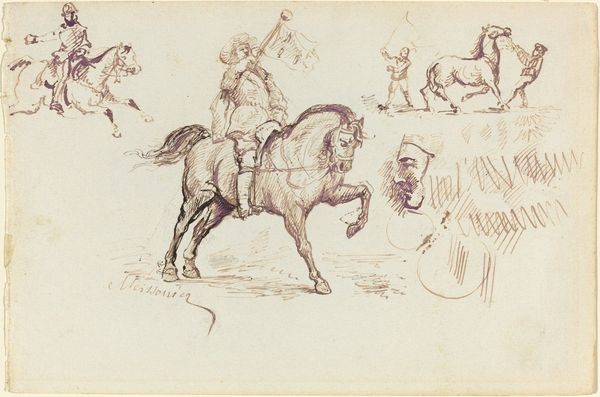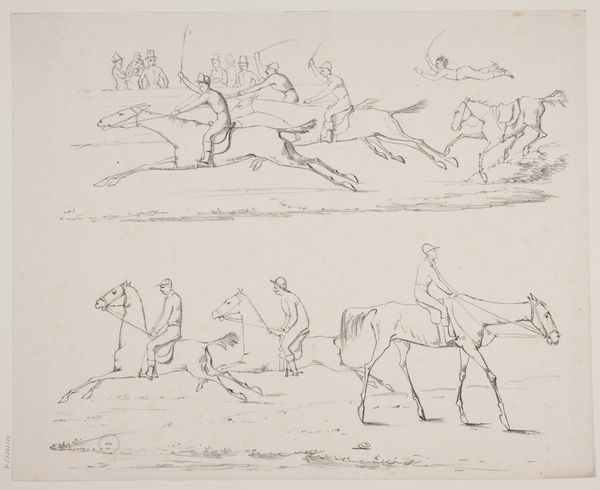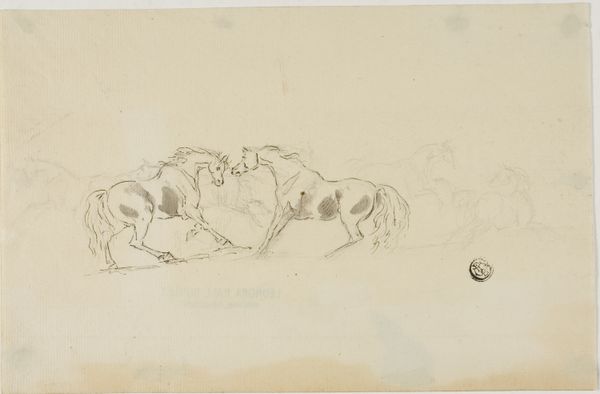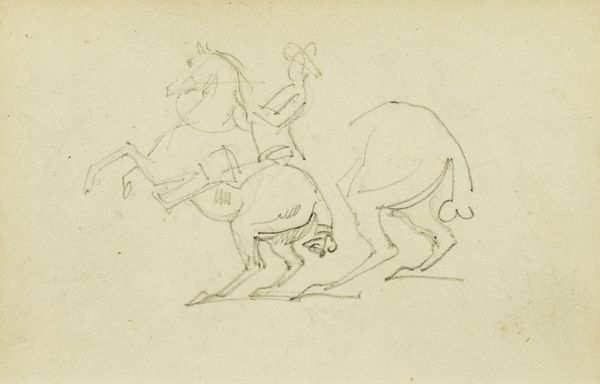
Sketches: Reclining Nude, a Horseman and Various Horses 1818 - 1819
0:00
0:00
drawing, print, paper, pencil, graphite
#
portrait
#
drawing
# print
#
pencil sketch
#
landscape
#
figuration
#
paper
#
romanticism
#
pencil
#
france
#
graphite
#
history-painting
#
nude
Dimensions: 224 × 283 mm
Copyright: Public Domain
Curator: Géricault's "Sketches: Reclining Nude, a Horseman and Various Horses," dating from 1818-1819 and held at The Art Institute of Chicago, offers us a glimpse into the artist’s creative process through pencil and graphite on paper. Editor: My immediate impression is of restless energy, like capturing fleeting movements. The horses seem to burst off the page. What do you make of the clustered composition? Curator: It suggests Géricault was wrestling with classical themes. The horseman evokes centuries of equestrian portraiture, but the reclining nude above him—seemingly unrelated— hints at the psychological and symbolic undercurrents that define Romanticism. There is a palpable tension in their contrast. Editor: Yes, observe the musculature depicted with such precision. You see how Géricault masterfully renders form with simple, assured lines? It's a study of light and shadow achieved with incredible economy. The artist uses hatching and cross-hatching to suggest depth and volume with surprising complexity, while also producing many lines to illustrate the motion of the objects and humans in the sketches. Curator: The horse, a recurring symbol throughout art history, here seems untamed, reflecting a larger societal unease. The Romantic era saw artists questioning established orders, turning inward to explore intense emotional states. The horse can easily become a representation of unbridled passions of freedom and control that could either bring conquest or be the death of humans. Editor: The sketch-like quality almost dissolves the subject into pure dynamism. Consider the strategic use of negative space; how the empty areas around each figure contribute to a feeling of boundless possibility. This work lacks some level of polish but speaks to an attempt to understand or realize something in motion. Curator: Precisely! Géricault, in these preparatory sketches, isn’t just capturing figures; he's charting the volatile landscape of human emotion and historical change. Editor: Ultimately, it highlights the artist’s capacity to find grandeur even in the intimate space of a sketchbook, offering unique insight into art-making. Curator: I agree. It serves as a fascinating testament to his visual vocabulary, reflecting social turmoil of its time as well as an early Romantic sensibility.
Comments
No comments
Be the first to comment and join the conversation on the ultimate creative platform.
